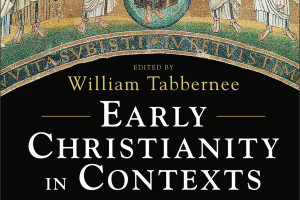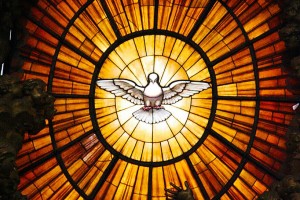As a good Protestant I was always taught to be grateful for, but suspicious of the first, fiercely devoted to the second, and un-threatened by the third. When Tradition is found wanting it can be remolded; it is malleable where the other two are not. Scripture is cast in stone. It does not change and therefore should not be changed. History is… history. It doesn’t exactly change either, but where its claims and interpretations run contrary to revelation they can be rejected, questioned, or quietly put aside until a more friendly theory emerges.
To talk about these three in the abstract, however, really fails to do justice with the violent and dynamic relationship they have to one another in the concrete particulars. Never in my life had I experienced this dynamism like I have during the last two weeks in Israel, and where I am currently writing.
It is a confluence of the three that brings me here: the land with its history that forms the setting of the scriptural accounts. But many of these sites are transformed from archeological digs into pilgrim’s destinations by the power of tradition.
Take Capernaum, for instance. The uniform testimony of the New Testament tells us that this was a focal point of Jesus’ life and ministry, as well as that of many of his disciples. One could walk the dusty streets of a ruined first century village and fill in the gaps with the imagination. However, tradition transforms one unremarkable building into “the House of St. Peter,” and now a great hulking spider of a church squats over its remains. It is a strange scene, and impossible to ignore.
Another curious site is the Church of the Beatitudes built on an unremarkable hill overlooking Galilee. This is a traditional site of the Sermon on the Mount. What makes it odd is that this Roman Catholic shrine dedicated to this incredible event was commissioned and paid for by Benito Mussolini, and the Roman Catholics have another church on the Mount of Olives in Jerusalem placed over where Jesus taught the Lord’s Prayer, which is itself part of the Sermon on the Mount![1] Tradition, Scripture, and History form a confusing, if not heartbreakingly comical, nexus to be filled with hopeful, if not skeptical, would-be pilgrims.
The real center of this whole nexus is Jerusalem. The Church of the Holy Sepulcher is a prime example. Currently it is a space shared by at least six splinters of Christianity, each with strong cases for the primacy of their traditions. Inside the church an uneasy peace is maintained through allowing these various groups to tend their own, sometimes rival, altars, chapels, relics, and icons. Each morning a Muslim cleric ceremoniously opens the door to let them all in. More on this point could be said about the Temple Mount itself; I, the Christian, was turned away by a Jewish policeman: “Only for Muslims,” he said.
It would seem that finding a solid footing on the ground of Tradition is far more complicated than it might seem.So what do I make of all this? Where do I find my “sacred space” or pilgrim’s goal? I struggled with this question throughout my trip. The complex weave of traditions was nearly impossible to navigate, and the resulting contradictions and inconsistencies stifled nearly all emotional reactions to what I was experiencing. There were several moments of painful realization that I was disappointed and underwhelmed. However, my own personal search ended, somewhat hesitantly at an unanticipated location: the Western Wall.
As I drew near the Wall I was asked something in Hebrew by an attendant. Seeing my incomprehension he asked if I was Jewish. I reactively told him I was not and he waved me along. Complimentary yarmulke in place I immediately wondered how the Apostle Paul would have had me answer that question, and what kind of trouble he and I would have found ourselves in. As I put my hand on the Wall, uncertain as to exactly what I was doing, or even if I was supposed to be doing it, the significance of the place struck me. The Wall is the only surviving portion of the Second Temple complex; it isn’t actually part of the Temple at all. But it was here, in connection somehow with these stones, that Jesus declared that he would destroy and raise up a new Temple. Up above, at the moment He died, the veil was torn and suddenly a gentile like me could come into the presence of God.





1 Comment
Leave your reply.